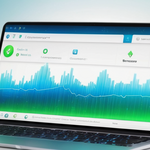
The ability to recover access to password managers and other critical online accounts represents one of the most consequential yet frequently overlooked aspects of digital security strategy. Recovery codes, also known as backup codes or one-time passwords, function as an essential safety net when users lose access to their primary two-factor authentication (2FA) devices or methods. However, their strategic storage presents a nuanced security challenge that sits at the intersection of accessibility and protection. This report examines the multifaceted approaches to storing recovery codes, analyzing the tradeoffs between various storage methods, exploring best practices grounded in contemporary security research, and providing actionable guidance for individuals seeking to implement robust yet practical recovery code management strategies within their personal cybersecurity architecture.
Understanding Recovery Codes: Purpose, Importance, and the Recovery Landscape
Recovery codes serve a fundamentally critical role in account recovery frameworks that extends beyond simple convenience or redundancy. When users enable 2FA on an account using methods such as Time-based One-Time Passwords (TOTP) through authenticator apps or hardware security keys, they establish a formidable barrier against unauthorized access. Yet this same protection mechanism creates a vulnerability in the recovery pathway: if users lose access to their 2FA device—whether through device loss, theft, damage, or accidental destruction—they face the prospect of permanent account lockout. This scenario occurs with sufficient frequency that security experts now recognize account recovery as an integral component of any comprehensive authentication strategy rather than an edge case concern.
The stakes of losing recovery codes extend far beyond minor inconvenience. Organizations and individuals store increasingly sensitive and valuable information within password managers, which themselves are often protected by 2FA. According to industry data, a single compromise of a password manager account can expose an individual’s entire digital infrastructure, including banking credentials, cryptocurrency wallets, legal documents, and sensitive personal information. When account recovery becomes impossible due to loss of both a 2FA device and its corresponding recovery codes, users face catastrophic scenarios where they lose permanent access to vault containing years of accumulated passwords and sensitive data. For password manager providers like GitHub, 1Password, and Bitwarden, the recovery code has therefore evolved into an essential authentication component that must be treated with the same security rigor as the master password itself.
Recovery codes typically manifest in several formats depending on the service provider. GitHub provides users with sixteen recovery codes, each consisting of alphanumeric characters. Other services might provide longer single codes or collections of shorter codes. The common characteristics shared across all recovery codes include their random nature, single-use functionality (typically), and their function as proof of legitimate account ownership. Once a recovery code is used to regain account access, it cannot be reused; the user must generate a fresh set of codes or rely on alternative recovery methods. This design reflects an important security principle: recovery codes function as a cryptographic proof of identity that should be generated before they are needed, stored with extraordinary care, and never transmitted insecurely.
The temporal dimension of recovery code management deserves particular attention. The time between when a user generates recovery codes and when they might need them could span years or even decades. This extended duration creates a distinct storage challenge: the medium itself must remain intact and accessible across this entire period. Unlike passwords that might be used weekly or monthly, recovery codes represent static information that must be preserved unchanged for an indefinite duration while remaining accessible only to the legitimate account owner. This temporal factor significantly influences storage method selection, as users must consider not only current security threats but also the long-term preservation requirements of whatever medium they choose.
The Single Point of Failure Debate: Password Managers Versus Separate Storage
Perhaps the most contentious question in recovery code management circles concerns whether these critical codes should be stored within the same password manager they ultimately protect. This debate centers on a fundamental security principle: the concept of a single point of failure. Storing recovery codes together with the passwords they protect appears, at first glance, to violate the principle of defense-in-depth and creates what some security practitioners describe as “storing the lock with the key”.
The traditional security argument against password manager storage rests on specific reasoning. If an attacker gains unauthorized access to an encrypted password manager vault, and they possess both the master password and the recovery codes, they have effectively defeated both the first authentication factor (the password) and what was intended as the emergency recovery mechanism. This concern gains additional weight when considering sophisticated attack scenarios where an attacker might compromise a password manager’s infrastructure through a zero-day vulnerability or supply chain attack. In such scenarios, storing recovery codes elsewhere entirely would provide a failsafe mechanism that remains secure even if the password manager itself is somehow breached.
However, contemporary security analysis reveals significantly more nuanced considerations that complicate this straightforward “don’t centralize” argument. The critical insight emerges when examining the threat model more carefully: for an attacker to access recovery codes stored in a password manager, they must already have defeated multiple security layers protecting the vault itself. If users implement strong master passwords combined with 2FA on their password manager account (which all security-conscious users should do), then an attacker attempting to access that vault would need to breach both factors before recovering codes ever become relevant. GitHub’s official documentation explicitly recommends storing recovery codes within password managers, citing that end-to-end encryption in reputable password managers provides adequate protection.
The argument gains further support when considering the practical security posture of typical users. As security researchers emphasize, the realities of threat modeling should account for what users realistically do rather than theoretical edge cases. Many individuals struggle with memorizing even one strong password, let alone managing separate secure storage methods for recovery codes. When faced with the choice between storing recovery codes in a dedicated, separate, unencrypted location and storing them in a strongly protected password manager, the password manager frequently represents the more secure choice because it increases the likelihood that recovery codes will actually be stored rather than neglected. Furthermore, users who enable 2FA on their password manager account have already demonstrated security consciousness; such users typically maintain strong master passwords and actively manage their vault security.
The debate also reveals important distinctions between storing recovery codes for a password manager itself versus storing recovery codes for other accounts. When a password manager user needs their recovery codes, they typically require this information when they cannot access their password manager normally—such as from a new device or after losing their 2FA device. Storing recovery codes within the manager itself means they remain inaccessible precisely when needed unless the user has already exported them or accessed them previously. This paradox has led many practitioners to advocate for hybrid approaches that distribute recovery code copies across multiple storage locations.
Leading password manager providers and security authorities have increasingly endorsed storing recovery codes within password managers, provided the vault itself is well-protected. The logic reflects a sophisticated risk calculus: the probability of an attacker simultaneously defeating both a user’s strong master password and their 2FA on the password manager itself, while that same attacker also possesses no knowledge of where recovery codes are stored separately, is substantially lower than many other threats users face. Moreover, users who centralize recovery code storage within password managers are far more likely to actually use their recovery mechanisms when needed because they remember where to find the codes. Security in practice often requires prioritizing what users will actually implement over theoretical perfection.
Physical Storage Methods for Recovery Codes: From Paper to Metal
Physical storage of recovery codes represents the oldest and, in many respects, the most straightforward approach to recovery code preservation. The fundamental appeal of physical storage rests on its fundamental disconnection from digital systems and networks: a piece of paper or metal cannot be hacked remotely, cannot suffer from software vulnerabilities, and cannot be accessed by malware. This air-gapped nature has led many security professionals to advocate for at least one physical copy of critical recovery information.
The most basic physical approach involves writing recovery codes directly onto paper and storing this paper in a physically secure location. This method requires minimal infrastructure, no additional tools beyond pen and paper, and can be accomplished in moments. Users should take care to write legibly and accurately; testing the written code by attempting to use it before filing it away serves as crucial verification that the transcription was correct. The paper should then be stored in a location that is both secure against theft and resistant to destruction. A home safe, locked drawer, or other secure storage location within the home represents the typical recommendation.
However, physical paper storage carries significant limitations that must be carefully weighed. Paper documents are inherently fragile and vulnerable to destruction through fire, water, mold, or simple decay over decades. The very act of writing down sensitive information creates a permanent record that exists in physical form; if a home is burglarized, the paper might be discovered by thieves. Additionally, if the user becomes incapacitated or dies and has failed to communicate the location of recovery codes to trusted individuals, the paper remains forever inaccessible. Some users have reported losing access to accounts permanently because recovery codes written down on paper were inadvertently discarded, destroyed in household accidents, or simply forgotten in a drawer whose location they no longer remembered.
A refinement of basic paper storage involves printing or writing recovery codes on paper and then storing multiple copies in geographically distributed locations. This geographic distribution strategy acknowledges that a single location might suffer total loss from natural disaster, fire, or other catastrophic events. By maintaining one copy at home, another with a trusted family member in a different city, and potentially a third in a safe deposit box, users can survive nearly any physical disaster while ensuring recovery codes remain accessible. This approach trades increased complexity and coordination requirements for substantially improved resilience and disaster recovery.
More sophisticated physical storage approaches involve engraving recovery codes onto metal plates or other durable media. The appeal of metal storage lies in its exceptional durability; industrial-grade stainless steel or aluminum seed phrase storage systems can withstand fire temperatures exceeding 2,600 degrees Fahrenheit and resist water damage indefinitely. These systems typically employ engraving or stamping techniques to permanently record the recovery information into the metal substrate. Products like the X-SEED metal seed phrase storage system or Keystone Tablet Plus have emerged specifically to address the limitations of paper storage by providing physically durable containers for critical digital recovery information.
The disadvantage of metal storage involves its cost, setup complexity, and increased visibility if discovered. A visibly labeled metal plate containing recovery codes immediately reveals its contents and purpose to anyone who finds it. Proper metal storage requires users to consider not only the physical durability of the storage medium but also its concealment strategy. Additionally, the cost of metal storage systems typically ranges from thirty to two hundred dollars or more, creating a financial barrier that many casual users find excessive.
Another physical storage innovation involves laminating printed recovery codes to provide both readability and water resistance. By laminating a printed copy of recovery codes, users create a durable physical record that resists water damage and environmental degradation while remaining far less expensive than dedicated metal storage systems. Some users combine lamination with safe deposit box storage, creating a physically protected, environmentally sealed record stored in a highly secure off-site location.
For all physical storage approaches, users must grapple with the fundamental challenge of recovery code access during actual emergencies. If recovery codes are stored in a home safe, they become inaccessible when the user is away from home and experiences a 2FA device loss while traveling. If codes are stored only in a safe deposit box accessible only during business hours, they become inaccessible after hours or during bank closures. This accessibility challenge has led many practitioners to recommend hybrid approaches that combine physical and digital storage to ensure emergency access from anywhere.

Digital Storage Approaches and Encryption Strategies
Digital storage of recovery codes offers significant advantages in terms of accessibility and ease of management compared to purely physical methods. Unlike paper stored in a distant safe deposit box, digitally stored recovery codes can be accessed from any device with internet connectivity, enabling rapid recovery access during genuine emergencies. Digital storage also enables easy duplication, redundancy, and geographic distribution of copies across multiple encrypted storage systems. However, digital storage introduces new security considerations related to encryption, key management, and the digital infrastructure upon which the storage depends.
The password manager approach to recovery code storage represents the most straightforward digital strategy and offers distinct advantages in terms of integration and simplicity. Services like Bitwarden, 1Password, and others explicitly recommend storing recovery codes as secure notes or custom fields within the manager itself. This approach offers several practical advantages: recovery codes are encrypted under the same encryption regime protecting all other vault data; they remain immediately accessible when users need them because users already know to look within their password manager; and they are automatically backed up whenever the vault syncs. When a user enables 2FA on their email account, for example, they can immediately add the generated recovery codes as a secure note in their password manager without requiring additional actions or external services.
The security foundation supporting password manager storage rests on the encryption architecture of reputable password managers. Services like Bitwarden and 1Password employ end-to-end encryption (E2EE) where data is encrypted on the user’s device before transmission to company servers. In such architectures, even the password manager company itself cannot access user data without the decryption key derived from the master password. As long as the master password remains secure and the password manager’s encryption implementation is sound, recovery codes stored within the manager inherit the same protection level.
Encrypted cloud storage services represent an alternative digital storage approach that provides geographic distribution while maintaining strong encryption. Services like Proton Drive, MEGA, or Sync.com employ zero-knowledge encryption where the service provider cannot access user data even if they wanted to. Users can create an encrypted text file containing recovery codes, upload it to these services, and rest assured that the codes remain encrypted and inaccessible to anyone except those with the decryption password. This approach provides excellent redundancy—multiple copies can be maintained across different cloud services with negligible storage cost. Additionally, if one service experiences a security breach, the encrypted files remain useless to attackers without knowledge of the encryption key.
The disadvantages of encrypted cloud storage approaches center on key management and accessibility. Users must create and remember a strong password used to encrypt the file containing recovery codes. If this encryption password is stored anywhere, the security benefit of encrypted cloud storage diminishes—users face a new “key to the kingdom” problem where the recovery code encryption password itself becomes a critical secret requiring protection. Some users solve this by storing the cloud storage encryption password in their main password manager, which returns the system to centralized storage with attendant tradeoffs.
Encrypted container approaches using software like VeraCrypt, Cryptomator, or password-protected ZIP archives provide users with high flexibility in digital recovery code storage. Users can create an encrypted file or volume, copy their recovery codes into it, and store this encrypted container in multiple locations—on local storage, in cloud storage, on USB drives, or all three simultaneously. The advantage of this approach lies in its flexibility and explicit encryption control; users maintain complete awareness of encryption parameters and can verify encryption implementation. The disadvantage involves complexity; users must manage multiple keys: the password protecting the encrypted container, and potentially additional passwords if the container is stored in cloud services requiring authentication.
Cold storage approaches involving dedicated USB drives or external storage devices represent an intermediate approach between purely physical and purely cloud-based digital storage. Users can encrypt a USB drive using operating system-level encryption (BitLocker for Windows, FileVault for macOS, or dm-crypt for Linux), copy recovery codes onto this encrypted drive, and then store the physical device in a secure location. The advantage of this approach lies in combining physical durability (USB drives continue functioning for years with proper storage) with strong encryption. The disadvantage involves accessibility; if a user needs recovery codes while traveling, they must physically carry the encrypted USB drive. Additionally, USB devices can fail or degrade over time, requiring periodic testing to ensure stored data remains readable.
Multi-Layered and Redundant Storage Strategies: Beyond Single Points of Failure
The sophisticated approach to recovery code storage embraces redundancy and distribution across multiple storage methods and physical locations. Rather than selecting a single storage method and hoping it remains secure and accessible indefinitely, best-practice strategies acknowledge that different users have different threat models and accessibility requirements. The conceptual framework underlying multi-layered recovery code storage borrows from established backup and disaster recovery principles, including the widely-adopted 3-2-1 backup rule.
Applying the 3-2-1 backup principle to recovery code management suggests maintaining at least three copies of recovery codes using at least two different storage media types, with at least one copy stored off-site. For recovery codes specifically, this might translate to one copy stored as a secure note in the password manager, a second copy encrypted within a dedicated cloud storage service, and a third copy written on paper stored in a safe deposit box. This approach ensures that loss of any single copy through theft, destruction, or inaccessibility does not result in permanent account lockout. The geographic distribution further protects against localized disasters that might destroy all copies stored in a single location.
Many security professionals advocate for hybrid approaches that explicitly distribute recovery code fragments or different portions of recovery information across different storage locations and trusted individuals. Rather than storing the complete recovery code in every location, users might store portions of the code across different services or with different people. For example, with a twelve-word recovery code or seed phrase, a user could store words one through four with one trusted family member, words five through eight with another trusted person, and words nine through twelve with a third party. In this scheme, no single person or copy becomes compromised in a way that allows access to the complete recovery code; instead, multiple parties must cooperate.
Shamir’s Secret Sharing (SSS) represents a sophisticated cryptographic technique that formalizes this principle of distributed secrets. Using SSS, a secret (such as a recovery code or master password) is mathematically divided into a specific number of shares such that any subset meeting a threshold requirement can reconstruct the original secret, but fewer than the threshold number of shares reveals nothing about the secret. For example, a user might split a critical recovery code into five shares using 3-of-5 threshold, meaning any three shares can reconstruct the complete code, but two shares are useless. The user could then distribute these shares to five trusted individuals or locations, comfortable in the knowledge that loss of any two shares (or theft by someone obtaining only two shares) cannot compromise account access.
Shamir’s Secret Sharing offers theoretical and practical advantages for account recovery planning, particularly for high-value accounts or individuals managing significant digital assets. The technique mathematically guarantees that possessing insufficient shares reveals zero information about the secret. Additionally, SSS enables recovery scenarios where multiple parties must cooperate or where distributed trust is desired. Some password managers are exploring or implementing SSS capabilities for emergency access features, recognizing that distributing recovery responsibility across multiple trusted parties provides better security and resistance to coercion than centralizing recovery authority in a single person.
The disadvantages of SSS and complex share distribution schemes involve increased operational complexity and the difficulty of ensuring that all share holders maintain their shares securely. If one of five people holding an SSS share subsequently experiences a security breach affecting their personal systems, and they have stored their share in an insecure location, that share’s compromise might threaten account access even if the other four shares remain secure. This consideration highlights a fundamental tradeoff in recovery code management: increasing the number of people and locations involved in recovery improves resilience to loss but introduces new potential attack vectors and requires that all parties maintain security discipline.
Time-delayed access represents another sophisticated approach to recovery code security and account recovery that some platforms are exploring. Rather than requiring recovery codes, time-delayed access systems allow users to initiate account recovery by providing their master password and email address, but then implement a mandatory waiting period before access is granted. During this waiting period (which might range from hours to weeks), the account owner can deny the recovery request if they did not initiate it, catching unauthorized recovery attempts. If the delay expires without denial, recovery access is granted. This approach eliminates the need for separate recovery codes while maintaining security through temporal barriers; an attacker with only an email address and password still faces a mandatory delay before accessing the account, providing time for detection and response.
Testing, Accessibility, and Practical Implementation: Bridging Theory and Practice
The theoretical excellence of a recovery code storage strategy means nothing if the codes do not work when actually needed. Recovery code management strategies therefore must incorporate regular testing to verify that stored codes remain accessible and functional. Yet testing presents a practical dilemma: using a recovery code to test it consumes the code (most systems invalidate used codes), requiring users to generate new codes afterward. This situation has led to widespread recommendation that users conduct “tabletop exercises” where they simulate recovery without actually consuming codes, or they conduct testing using a secondary account where consuming codes does not create risk.
Effective testing involves more than simply verifying that recovery codes exist. Users should simulate the actual recovery scenario they prepare for: “Imagine I lose my 2FA device right now. Can I actually regain access using my recovery codes from their current storage location?”. For codes stored in a home safe, this means actually walking to the safe, retrieving the codes, and attempting recovery. For codes stored in a safe deposit box, it means considering the time of day and day of week when the test occurs; if the box is inaccessible during off-hours or weekends, recovery codes might prove inaccessible precisely when needed. This situational awareness should inform storage location selection.
Documentation and communication with trusted individuals represents an often-overlooked critical component of recovery code management, particularly for scenarios involving incapacity or death. If a user stores recovery codes in a location that only they know about, and that user experiences sudden incapacity or death, family members or executors cannot access the stored codes. Best practice therefore recommends documenting the location of recovery codes and communicating this information to one or more trusted family members or friends. Alternatively, users can use formal mechanisms like emergency access contacts built into password managers (Bitwarden, 1Password, LastPass all offer such features) that allow designated people to request access in emergencies.
Creating a digital will or digital legacy plan represents an increasingly important facet of comprehensive account recovery planning. Services like LastPass Emergency Access enable users to designate emergency contacts who can request access to the vault after a specified waiting period. Bitwarden’s emergency access feature allows similar functionality. These mechanisms solve the problem of recovery code communication by formalizing the process within the password manager itself; the designated emergency contact can request vault access, and after a specified waiting period, they receive full access to all passwords and recovery codes stored within the manager.
Practical accessibility considerations should influence recovery code storage decisions. Users traveling frequently might prioritize accessibility by storing recovery codes in their primary password manager rather than in a geographically remote safe deposit box. Users with strong home security systems and staying stationary might feel comfortable with primarily physical storage options. Users with significant digital assets and high security requirements might accept the additional complexity of distributed SSS-based recovery schemes. The goal should be achieving recovery code storage that balances security, accessibility, and resilience appropriate to each user’s specific threat model and circumstances.
The challenge of balancing security with usability deserves explicit recognition. Overly complex recovery code storage strategies that require technical expertise or elaborate coordination risk being abandoned altogether. A good-enough recovery code storage strategy that a user actually implements is superior to a theoretically perfect strategy that they find too burdensome and therefore neglect. This principle suggests that individuals should select recovery code storage approaches they can sustain indefinitely and will actually test and maintain.

Advanced Techniques and Contemporary Considerations in Recovery Code Protection
Emerging approaches to recovery code protection incorporate advanced cryptographic and organizational techniques that extend beyond traditional storage mechanisms. These advanced strategies generally appeal to individuals managing exceptionally sensitive information, significant digital assets, or those operating under heightened threat models.
Air-gapped storage represents a sophisticated approach where recovery codes are stored on devices that maintain no network connection, eliminating entire categories of remote attack vectors. An air-gapped system might involve encrypting recovery codes, storing them on a dedicated USB drive that connects to the internet only during intentional, supervised transfer operations, and then remaining physically disconnected. This approach prevents malware running on internet-connected systems from ever accessing the recovery codes. However, air-gapping requires significant technical expertise, disciplined operational procedures, and acceptance of reduced accessibility.
Immutable and tamper-evident storage approaches adapt concepts from ransomware defense and forensic security to recovery code management. WORM (Write-Once-Read-Many) storage formats create recovery codes that cannot be modified or deleted once written. Combined with comprehensive logging and monitoring, immutable storage provides detection of unauthorized access attempts while ensuring recovery codes remain intact and accessible. Organizations managing critical recovery codes might implement immutable cloud storage specifically for recovery code maintenance, sacrificing some flexibility for absolute assurance that recovery codes cannot be secretly modified or exfiltrated.
Cryptographic verification and integrity checking represent additional sophistication layers where recovery codes themselves are protected by cryptographic signatures or message authentication codes. Users might store recovery codes alongside cryptographic hashes or signatures that verify the codes have not been tampered with since storage. This approach provides detection of unauthorized modification attempts while maintaining code readability and accessibility.
Continuous rotation and periodic refresh of recovery codes represents an additional layer of security discipline that some high-security environments practice. Rather than generating recovery codes once and expecting to maintain them unchanged indefinitely, users or organizations might rotate recovery codes on a schedule (e.g., annually or when traveling to high-risk environments). New codes are generated and stored using the same security procedures, while old codes are securely destroyed. This approach limits the damage from any single recovery code exposure by ensuring that exposed codes become invalid or ineffective.
The integration of biometric authentication with recovery mechanisms represents an emerging consideration where recovery code access itself is protected by biometric verification. Users might store recovery codes in a secure location that requires biometric authentication (fingerprint, facial recognition) in addition to knowledge factors to access them. This approach adds a physical authentication layer that makes recovery codes less vulnerable to theft or social engineering attacks that might compromise passwords or PINs.
Synthesizing Recommendations: Storage Strategies for Different User Profiles and Threat Models
The optimal recovery code storage strategy depends fundamentally on individual threat models, security requirements, and accessibility needs. Rather than prescribing a single approach universally, this analysis recognizes that different users rationally prefer different storage strategies based on their circumstances.
For the average user maintaining standard personal accounts with reasonable security practices, storing recovery codes as secure notes within an actively maintained password manager represents a defensible and practical approach. Combined with a strong master password and 2FA enabled on the password manager account itself, this strategy provides multi-factor protection for recovery codes while ensuring they remain accessible when needed. The user should test their recovery process at least annually to verify accessibility and maintain awareness of where recovery codes are stored.
For users managing higher-value accounts, cryptocurrency wallets, or business-critical access credentials, a hybrid approach incorporating multiple storage methods provides superior resilience. Such users might maintain one copy of recovery codes in their password manager for emergency accessibility, a second copy encrypted within secure cloud storage, and a third copy stored in physical form in a safe deposit box. This approach ensures that loss of any single copy or single storage system does not result in permanent account lockout. Periodic testing of each recovery pathway (accessing recovery codes from each storage location) should occur at least annually.
For users with heightened security concerns, significant digital assets, or formal disaster recovery requirements, advanced techniques such as Shamir’s Secret Sharing distributed across multiple trusted parties provide additional security and resilience. Such users should work with security professionals to design recovery schemes that align with their specific threat models and recovery requirements. Regular testing and documentation become even more critical in advanced schemes to ensure that designated recovery parties maintain their shares and understand recovery procedures.
For individuals managing the accounts or digital estates of elderly parents, users should prioritize emergency access features that enable designated individuals to request access in crises. Combined with secure documentation of recovery code locations, this approach ensures that family members can regain access to critical accounts when needed for end-of-life affairs or emergency decision-making.
Your Smart Recovery Strategy
Storing recovery codes “the smart way” requires balancing theoretical security principles with practical implementation realities, accessibility requirements, and individual threat models. No single approach optimizes all three dimensions simultaneously; instead, users must make informed tradeoffs based on their specific circumstances. The critical insight emerging from contemporary security practice is that the perfect recovery code storage strategy that users never implement provides zero protection, whereas a good-enough strategy that users actively maintain, periodically test, and document for emergency access provides substantial protection.
The debate between centralized storage in password managers versus distributed physical storage has evolved beyond a simple either-or proposition. Modern security thinking embraces hybrid approaches that leverage the strengths of multiple storage methods while mitigating their individual weaknesses through thoughtful redundancy and geographic distribution. Password managers, when properly maintained with strong master passwords and 2FA, provide excellent accessibility for recovery codes while maintaining robust encryption. Combined with at least one additional copy stored separately—whether as encrypted cloud storage, physical media, or distributed shares—this approach provides both accessibility and resilience.
The emergence of advanced cryptographic techniques like Shamir’s Secret Sharing and time-delayed access mechanisms represents the frontier of recovery code protection, enabling users to distribute recovery authority across multiple parties or implement temporal barriers to unauthorized recovery attempts. These techniques appeal particularly to individuals managing sensitive information or those prioritizing mathematical certainty in their security designs.
For all users, regardless of their specific storage approach, certain principles remain universal: recovery codes must be generated before they are needed, stored in one or more secure locations immediately upon generation, tested periodically to verify accessibility and functionality, and clearly communicated to trusted individuals who might need to use them in emergencies. Regular documentation reviews ensure that recovery procedures remain current and effective. When threat models change—such as during travel to high-risk environments or after experiencing a security incident—recovery code storage strategies should be reviewed and updated accordingly.
The ultimate goal of thoughtful recovery code storage is enabling legitimate users to regain access to their critical accounts in genuine emergencies while preventing unauthorized individuals from accessing accounts even if they compromise primary authentication factors. When users balance security and accessibility appropriately, implement their chosen strategy consistently, and maintain discipline in protecting recovery codes, they achieve the balance between protection and resilience that modern digital security requires. The complexity of contemporary online life—where password managers contain years of accumulated credentials, where 2FA protects access to banking and cryptocurrency assets, and where account recovery might determine whether individuals can access vital information in emergencies—makes thoughtful recovery code management not a optional security practice but a fundamental component of comprehensive digital security and personal resilience.
Protect Your Digital Life with Activate Security
Get 14 powerful security tools in one comprehensive suite. VPN, antivirus, password manager, dark web monitoring, and more.
Get Protected Now





